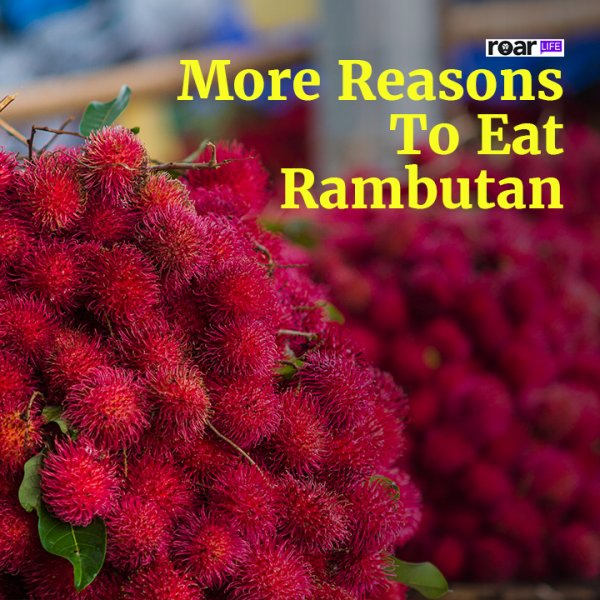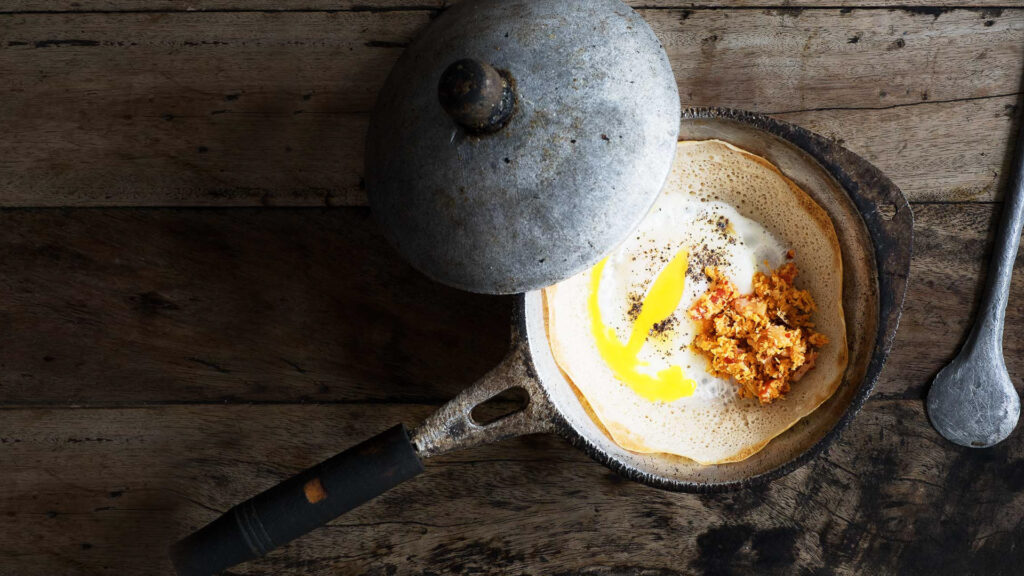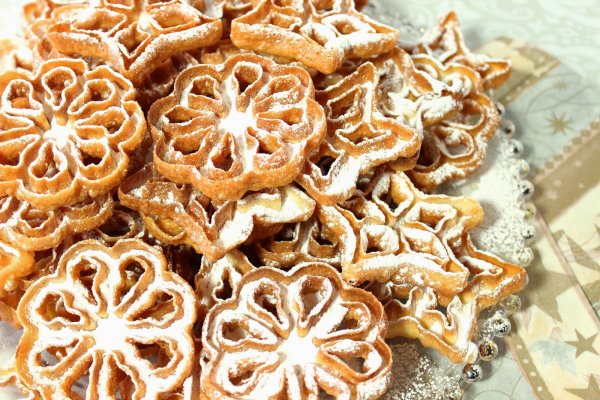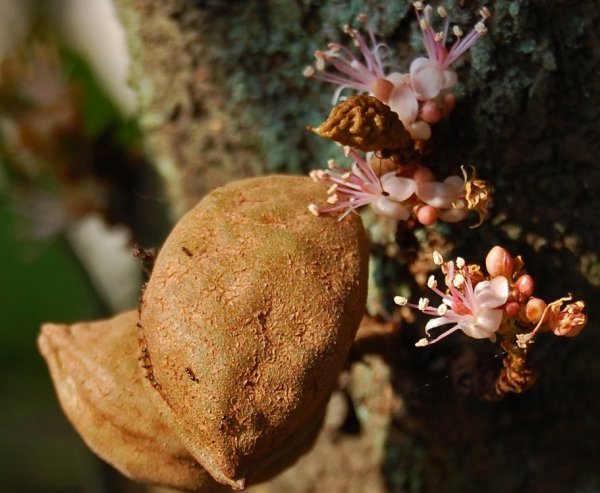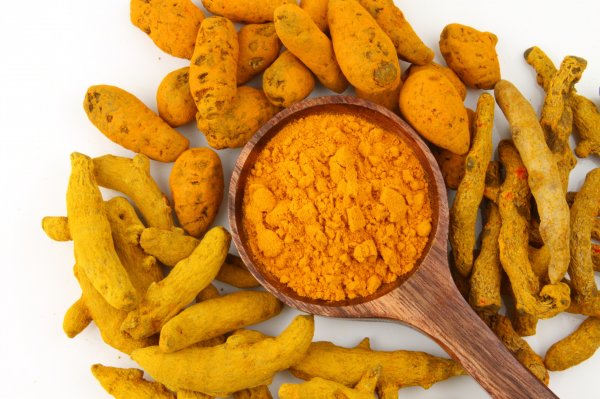
If there is anything that Sri Lanka does not lack, it is variety. A melting pot of various ethnicities, this little island off the coast of India is home to more traditions than you can count. Years of coexistence between different communities have blurred the lines between the individual cultures, resulting in a hodgepodge of colourful customs and practices embraced by everyone, regardless of race or origin.
Food is an important part of the island’s cultures and traditions. Every religious festival or cultural ceremony heralds a different traditional snack, from kiribath (milk rice) and rava kesari (semolina pudding) on the Sinhala and Tamil New Year, to wattalapam (jaggery soufflé) on Muslim festivals and love cake on Christmas. Many of the culinary details that distinguish the country’s cuisine originate from the various different colonial and cultural influences exerted over the centuries by foreign entities and settlers. However, these details have long since developed their own uniquely Sri Lankan twist, and would no longer be recognised by their parent nations. Not all our dishes bear the signs of any known outside influence, though, with some of them found in Sri Lanka alone, like kiribath.
Infused with a blend of heady aromas and mouthwatering flavours, our cuisine is characterised by an individuality that sets it apart from the rest of the world. Even a basic meal here can leave all other food tasting bland and unadventurous by comparison. Here are ten reasons why a typical Sri Lankan meal is so distinctive.
Some of our dishes can’t be found anywhere else in the world
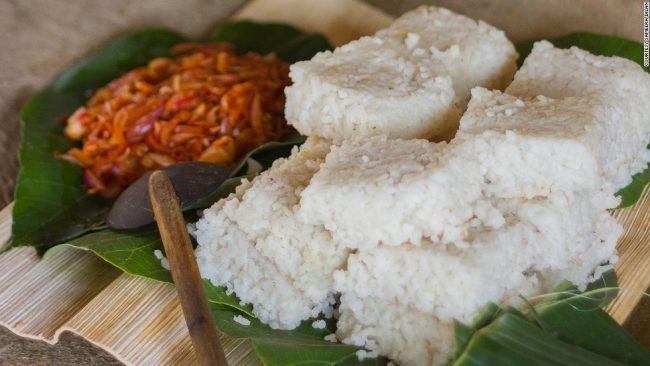
Kiribath and lunu miris are two of Sri Lanka’s very own specialties. Image courtesy: cnn.com
Some of our food, like lunu miris (onion and chilli paste) and ambul thiyal (sour fish curry) are so quintessentially Sri Lankan, that you would be hard put to find them anywhere else in the world. Even if you do manage to find them, odds are that they would be a poor substitute of what we have here. Ergo, the confusion of customs officers all over the world when they find approximately seventy-five jars of katta sambol (our local chilli paste), malay pickle and karavala pachadi (dried fish pickle) tucked into the recesses of every Sri Lankan traveller’s luggage.
Each meal is served with a dozen curries
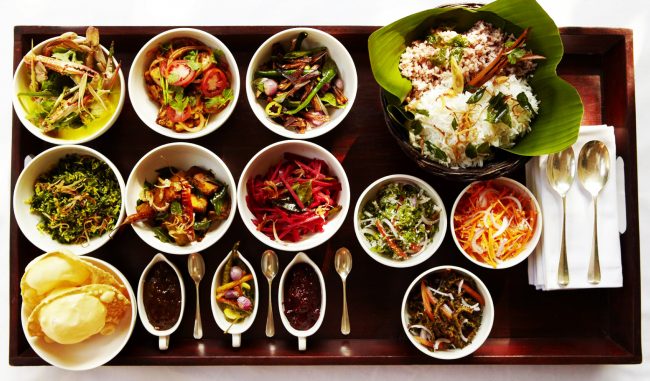
Every meal is served up with a wide variety of curries. Image courtesy: gatetotravel.de
A typical meal in Sri Lanka is a combination of an eight-course banquet rolled into one giant feast. The obligatory carbohydrate portion consisting of a mountainous pile of rice, string-hoppers, or pittu, is served with half a dozen or more side dishes of meat, vegetables, yams, and leafy greens. A regular “rice and curry” platter is an explosion of myriad contrasting tastes and aromas, all packed into one plate and gelled together by the mandatory dhal curry. There is no such thing as a one-pot meal here – even biriyani is accompanied by about five different side dishes.
Coconut is one of our main ingredients
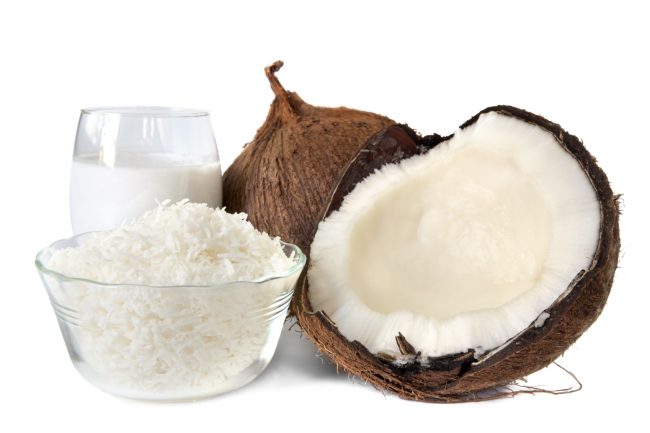
All parts of the coconut, including its kernel, milk, oil, and water, are indispensable ingredients in Sri Lankan cuisine. Image courtesy: foodnavigator-usa.com
Sri Lankan food would not be what it is without the magic ingredient: coconut. No edible part of the coconut fruit goes unused in our food. The kernel of the mature coconut is used directly in cooking, squeezed to yield milk, or pressed to make oil. We use coconut milk in everything we cook, from curries to salads to oatmeal. Regardless of the fact that one has to spend an hour every day scraping, blending, and squeezing the kernel while sustaining minor injuries in the process, nothing satisfies the heart of a Sri Lankan matriarch like a splash of fresh coconut milk in every dish. Pol rotti (flatbread made of wheat flour and coconut) and pol sambol (coconut relish) are both bona fide local food that are coconut-based. If you think bread with butter is appetising, you would find bread with pol sambol positively ambrosial.
We add turmeric to everything
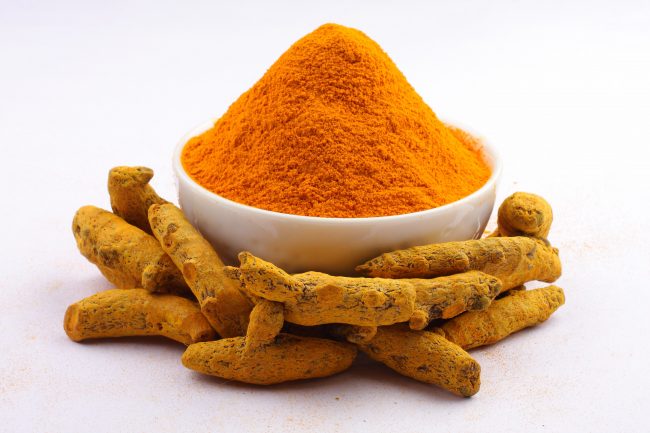
Turmeric powder is responsible for the yellow colour of most Sri Lankan dishes. Image courtesy: ultimatenepalesecookbook.com
No Sri Lankan dish is complete without a spoonful of turmeric powder. Even rice doesn’t always escape the turmeric treatment. Derived from the root of a plant that is endemic to Southern Asia, turmeric is widely used for its antibacterial properties in these parts of the world. This spice is responsible for the fifty shades of yellow that characterise our curries. It also gives our food its distinctive flavour and aroma.
We don’t hold back on the other spices, either

The only time Sri Lankans have any liberal tendencies is when they add spices to their food. Image courtesy: traleto.com
Even the blandest of our dishes would burn the taste buds off an unadventurous foreigner. Chilli powder and chilli are a Sri Lankan cook’s best friend, so much so that dishes like lunu miris are made entirely of chilli, with only a few other ingredients thrown in; because where’s the fun in mealtimes if you don’t overdose on spices and spend the next half hour gulping down water with your flaming tongue hanging out? Add to the mix a bunch of other spices, like mustard, coriander powder, pepper, garlic, cinnamon, ginger, nutmeg, and cardamom; et voilà, you’ve got yourself an authentic Sri Lankan masala packed with enough heat to propel a rocket all the way to space. When it comes to spices, we go big or we go home.
Artificial sauces, mayonnaise, and cream are rarely used
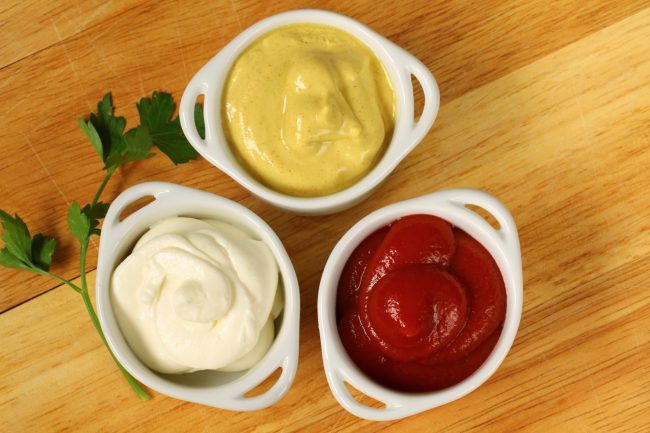
Additives like artificial sauces, mayonnaise, and cream are not often used in Sri Lankan food. Image courtesy: theyoungshopaholic.com
Traditional cooks in Sri Lanka are known to religiously avoid artificial additives in their food. And, despite being a staple in Western food, mayonnaise is not all that popular here, and is considered nausea-inducing by the more conservative islanders – as is ketchup; there’s no need for that (or so the elders say) when we have enough sambolas and achcharus to accompany our food. As for cream, why use it when you have coconut milk?
Our principle herbs are karapincha (curry leaves) and rampa (pandan leaves)
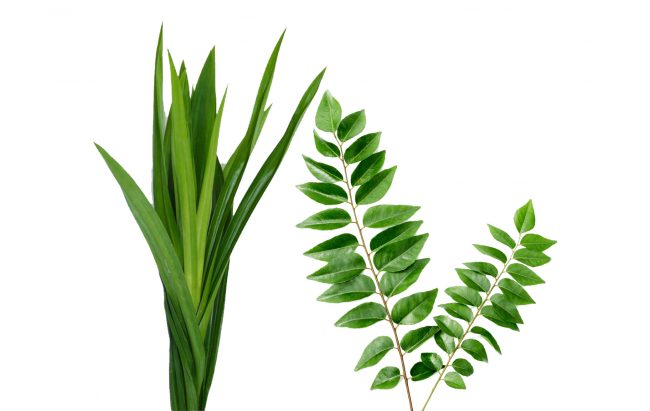
Karapincha and rampa are the main herbs that garnish our dishes. Image courtesy: wisegeek.org
Cilantro, parsley, and thyme are all very well, but nothing gives a kick to a curry like karapincha or rampa. Stir-frying curry leaves and onions in oil is the first step towards any culinary masterpiece in Sri Lanka. In addition to their pungent aroma, karapincha and rampa are also known for their medicinal effects. Since they take root in any type of soil here, most locals tend to have a couple of karapincha and rampa plants in their backyard, ensuring that these vital ingredients are always at hand.
We serve fruits and vegetables that are unrecognisable to the rest of the world
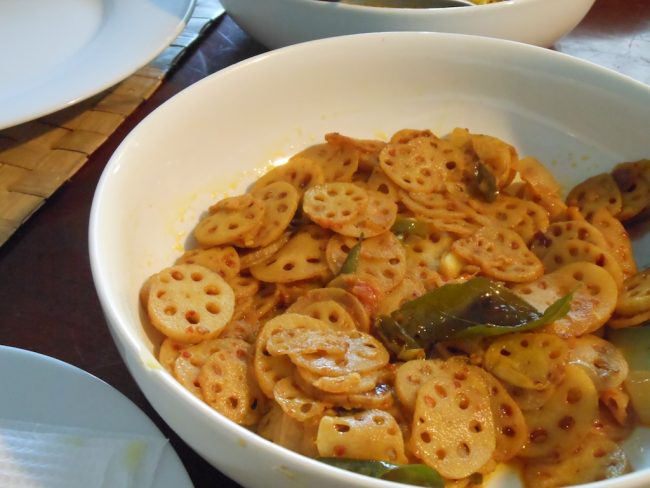
Nelum ala or lotus tubers are one of the obscure root vegetables commonly eaten in Sri Lanka. Image courtesy: thewanderlustgene.files.wordpress.com
Not for us are the run-of-the-mill vegetables like broccoli and Brussels sprouts – instead, we have nelum ala (lotus tubers), wetakolu (ridge gourd), murunga (drumstick), bandakka (okra), pathola (snake gourd) and kohila (lasia), among other equally unheard of vegetables. Usurping the starchy goodness of plain old potatoes, we have alu kehel (ash plantain), dhel (breadfruit), kos (jackfruit) and polos (tender jackfruit). Popular leafy greens in Sri Lanka include gotukola (pennywort), kathuru murunga (agati leaves), kankun (water spinach) and thampala (amaranth leaves). The more obscure and unpalatable the vegetable is, the greater its nutritional value, or so the old-timers claim.
Ripe tamarind and goraka (sun-dried brindleberry) are integral parts of our fish and seafood curry
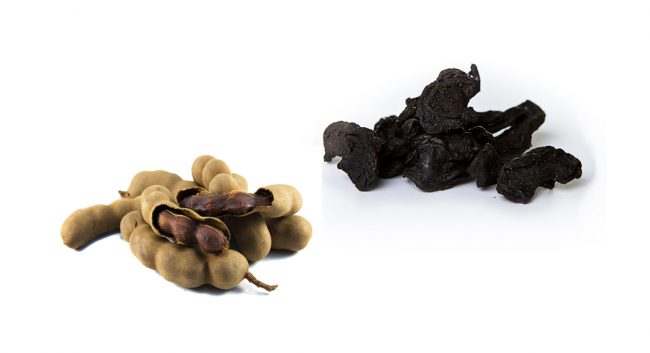
Tamarind and goraka are widely used in fish curry to add a tangy flavour. Image courtesy: huffingtonpost.com
Tamarind and goraka, which are characterised by their sour taste, are used to flavour our fish curries. Despite resembling blackened animal droppings, they are not only responsible for the distinctive tang in our seafood curries, but they also do a good job of masking particularly fishy odours. They serve an additional role in our food as preservatives; for instance, when used in ambul thiyal, tamarind helps preserve the curry for a longer period of time.
Preparing a meal is a lengthy process
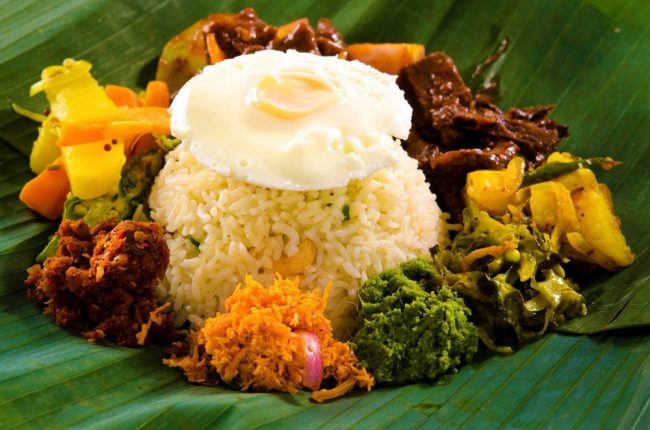
Preparing a meal in Sri Lanka is no easy task. Image courtesy: Aliyaa Island Restaurant & Bar
Unless you are a seasoned cook, it takes about ninety years (or so it would seem) to prepare a single meal in Sri Lanka. To make a “simple” breakfast of string hoppers, chicken curry, dhal curry, pol sambol plus a few other side dishes, you have to wake up at the crack of dawn and start scraping coconuts. As soon as breakfast is cleared away, you have to scurry back to the kitchen and scrape some more coconuts for lunch. Whipping up a Sri Lankan meal is certainly no task for the feeble-bodied. However, the endless toil is worth it, because few things are more wondrous than the spread on our tables at mealtimes.
The singularity of a meal in Sri Lanka doesn’t end there. In order to make sure that their hard work is duly appreciated, the person responsible for making the meal (most often, a female member of the family) hovers around the table, forcing as much food down everyone’s throats as possible. The militant gleam in their eyes as they keep piling rice on your plate, dares you to turn down the efforts born of their blood (from the coconut scraper), sweat, and smoke inhalation. The wisest course of action, therefore, is to buckle down for the long haul and eat till you pass out.
This article is brought to you by Knorr පරිප්පු Twist
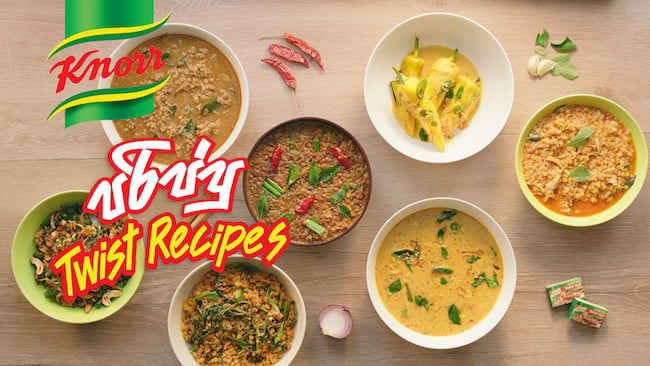
Featured image: Kotthu roti, made out of wheat flour flatbread and vegetables, is one of the most popular authentic Sri Lankan dishes. Image courtesy: mefoodie.net

